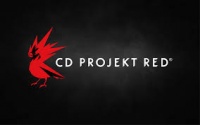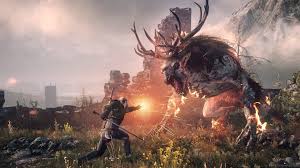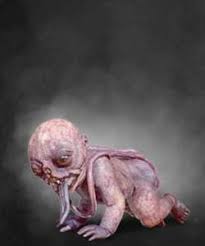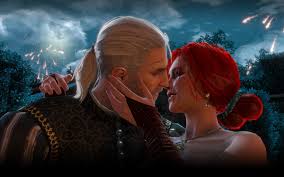Witcher 3: Wild Hunt
The Witcher 3: Wild Hunt is a third person action RPG video game created by the polish company CD Projekt Red.[1] This game is third in the Witcher Series and was created to be the largest game in the series yet in terms of scope, story elements, and gameplay options. The Witcher 3 takes place in a fictional land called the Northern Kingdoms, which is designed to be similar in appearance and climate to that of Northern Europe and Scandanavia[kotaku]. The game is an open-world adventure in which you take control of a master monster hunter by the name of Geralt of Rivia. The Witcher 3 includes sword fighting, the use of magic, horse riding, and even card playing as its main gameplay features.
In this fantasy environment, the player goes on an adventure as Geralt of Rivia to find and save the Emperor's daughter Ciri, who Geralt helped raise and train. A mysterious force called the Wild Hunt is after Ciri, and it is Geralt's job to save her from them.[2]
The Witcher series has come with success but Witcher 3 was the most successful game in the series by a large margin, trample both games that came before it with the Witcher 3 selling 15 times as much than its predecessor. With this contribution, the Witcher series reached a sale of 33 million copies in 2018[3], with a majority of those sales due to the Witcher 3's success.
Contents
Story
The Witcher 3's story starts with Geralt trying to determine the location of Ciri, who has been missing for some time. In order to find Ciri, Geralt attempts to track down his old lover YenneferCite error: Closing </ref> missing for <ref> tag.
In Skellige, Geralt finally finds Yennefer and is close to Ciri's trail. In this questline, Geralt finds himself getting caught up in the local politics of the area and after helping Yennefer with enough quests, she gives him more information about Ciri, and about the Wild Hunt, who is the mysterious group of people hunting her. For the last mission in this area, which also happens to be the last mission in the first act, the game allows the player to play as Ciri, in a situation where she is fighting off members of the Wild Hunt and fleeing from them[4]. By this point, the enemy has been made clear to be the Wild Hunt and Geralt is hot on Ciri's trail.
Act 2 begins with Yennefer informing Geralt on her only lead to Ciri, which is a small deformed creature known as Uma. Yennefer believes that there is a curse on Uma and asks if Geralt would be willing to take Uma to the witcher school and home called Kaer Morhen. Geralt agrees and upon breaking the curse, he finds out that Uma is actually an elf named Avallac'h and was Ciri's traveling companion until recently. He reveals that he has been helping Ciri escape from the Wild Hunt, who is after her for her immense latent power. Avallac'h also explains that the Wild Hunt are hunters from a different realm that plan on using Ciri's power to invade more realms. Avallac'h also reveals that Ciri is in the Isle of MistsCite error: Closing </ref> missing for <ref> tag.
Gameplay
Geralt utilizes his swords as well as his magic abilities to defeat the monsters and enemies in the game. Being an open-world RPG, players are able to equip Geralt with new weapons and armor as the game progresses[5]. Also, Geralt gains experience with every mission completed and enemy slain, allowing him to grow in skill and strength as the game goes on. The entire game is only single player and is heavily narrative driven, so in most cases when talking to another character in the game, the player has the choice to decide what Geralt says. Choice is actually a prominent gameplay feature and decides how certain scenes will play out[6] and even effects the story, especially near the end of the game.
Ethical and Moral Dilemmas
The Bloody Baron
The Bloody Baron questline is one of the most controversial in its depiction of gruesome and disturbing themes, but also in its ethical representation of fatherhood. During the questline, it is revealed that the Bloody Baron is an alcoholic, and used to have a wife, which has not yet been seen in the game. It is later revealed that the Bloody Baron was meant to have a baby with his wife, but during a drunken rage he beat his wife and caused her to have a miscarriage. This stillborn baby becomes a monster called a botchling because the Baron simply through it out instead of giving the baby a proper ritual. The botchling looks like a monstrous version of a baby, with the umbilical cord wrapped around the neck and incomplete facial features. The imagery of this monster and its presentation as an enemy was difficult for many players. We then see the Bloody Baron grow as he progresses through his story, trying his best to repent for his mistakes, eventually finding his wife in the Crookback Bog and apologizing to her. The players are not shown a one dimensional, evil man, but a multilayered person riddled with moral and ethical issues as he tries to repent for his prior sins. He is a man and a father who is given the chance not only to ask for forgiveness, but also given the opportunity to repent, as the botchling's soul can be saved if the Baron gives it a proper burial[7].
By giving the Baron this opportunity to properly bury his stillborn daughter and officially acknowledging her as his own, it gives the Baron an opportunity not only to repent for his sins, but also to confront who he is as a person. It allows the player to see a man who is in a sense an "anti-father"[8] finally take responsibility and become a real father for his child. The moral implication of this redemption is that sometimes prior mistakes can be dealt with and resolved on a personal level[9], but cannot be undone, as, after all, the Baron's child is still dead.
After his questline is resolved, the Baron has many different outcomes depending on player choices. One of these outcomes, is him hanging himself in the garden for the player to see. This act and the way that it is represented without being censored, caused more ethical issues, this time on the theme of suicide. This moment is meant to make players question the Bloody Baron's morality and whether mistakes can truly be resolved. Similar to how things that people post on the internet persist even if taken down, this situation is meant to make player wonder if their personal mistakes also persist despite our best attempts at solving them.[10][11] The moral and ethical issues of suicide and fatherism[12] are all highlighted and brought into question in the Baron's story.
Female Representation
The way that females have been represented in this game is not always appropriate and is somewhat sexist. Throughout the game, the player can simply walk into one of the many brothels located in the game and pay a relatively low amount of money to sleep with one of the women working there. In addition, most of the women that are part of the story can be romanced and slept with by Geralt, often dehumanizing otherwise deep female leads. Both the brothels and depiction of main female characters objectifies the females in the games and makes them seem like tools that Geralt can use rather than deep people. In addition to this, when the Geralt and his selected woman are in the act, the scene shows them as stark opposites of each other, where Geralt's body is battle-scarred while the women all have perfectly clear bodies that all look somewhat similar, once again objectifying them and making them less of individuals and more like playthings.White Representation
In a world filled with a large multitude of monsters and unique characters, some players and critics found it very ethically concerning that almost every single character in the game is white. The lack of diversity in the lengthy RPG is concerning to some because it feels out of place and brings about some ethical questions as to why other races weren't included. The game does hail from Poland, which is known to be very proud of its heritage and ancestry, but this makes some wonder whether this is a valid excuse or even a reason to not include other races into the game.
Treatment of Geralt
Witchers in the game are looked down upon as mutants and freaks and are often discriminated against even when they are trying to help people. The discrimination of Geralt during the game puts the player in the shoes of someone who is hated by others simply for who he is. The discrimination displayed here is riddled with ethical issues as it seems to run parallel to some discrimination that is present in the real world. On top of this, players are forced to play as this discriminated against character and are allowed to develop their own emotions or thoughts about discrimination.
Open World and Choices
The ability for the player to do what they want and interact with the open world in many ways is concerning on an ethical level. Players in this game are able to decide whether or not people die, push people towards suicide, or coerce them into doing their bidding. Players can haggle people, punish the rich and poor all alike, and refuse to help even the neediest of characters. On the other hand, players could help everyone they see and help everyone without taking pay. The choices made by player in almost every part of this game are set up as moral dilemmas for players and even a reflection of the player's morality. Often time, choices within this game have both positives and negatives regardless of what a player chooses, resulting in some very difficult moral choices.
References and External Links
http://www.firstpersonscholar.com/pursuing-the-other/
https://thatsnotamoonreviews.wordpress.com/2015/06/17/an-ethical-witcher/
https://dl.acm.org/citation.cfm?id=2810259
https://link.springer.com/article/10.1007/s10676-017-9420-x
https://www.kinephanos.ca/Revue_files/2017_Matuszek.pdf
http://digra2017.com/static/Full%20Papers/144_DIGRA2017_FP_Lucat_Playing_with_Patricarchy.pdf
https://kotaku.com/a-beginner-s-guide-to-the-world-of-the-witcher-1704506152
https://www.vg247.com/2017/12/20/the-witcher-3-guide-walkthrough-pc-ps4-xbox-one-wild-hunt/
https://www.ign.com/wikis/the-witcher-3-wild-hunt/Walkthrough
https://witcher.fandom.com/wiki/Phillip_Strenger
https://kotaku.com/the-story-behind-the-witcher-3s-bloody-baron-quest-1736090893
https://www.igi-global.com/chapter/designing-games-ethics/50729
http://www.diva-portal.org/smash/record.jsf?pid=diva2%3A895536&dswid=-7262- ↑ https://en.cdprojektred.com/
- ↑ https://thewitcher.com/en/witcher3/
- ↑ https://wccftech.com/witcher-33-million-witcher-3-2017-pc/
- ↑ https://www.ign.com/wikis/the-witcher-3-wild-hunt/Walkthrough
- ↑ https://kotaku.com/a-beginner-s-guide-to-the-world-of-the-witcher-1704506152
- ↑ https://kotaku.com/a-beginner-s-guide-to-the-world-of-the-witcher-1704506152
- ↑ http://digra2017.com/static/Full%20Papers/144_DIGRA2017_FP_Lucat_Playing_with_Patricarchy.pdf
- ↑ http://digra2017.com/static/Full%20Papers/144_DIGRA2017_FP_Lucat_Playing_with_Patricarchy.pdf
- ↑ http://digra2017.com/static/Full%20Papers/144_DIGRA2017_FP_Lucat_Playing_with_Patricarchy.pdf
- ↑ http://digra2017.com/static/Full%20Papers/144_DIGRA2017_FP_Lucat_Playing_with_Patricarchy.pdf
- ↑ https://www.igi-global.com/chapter/designing-games-ethics/50729
- ↑ http://digra2017.com/static/Full%20Papers/144_DIGRA2017_FP_Lucat_Playing_with_Patricarchy.pdf




